 Chinese calligraphy of the Northern Wei dynasty (北魏, 386 - 534 C.E.) has one of the most powerful standard script styles in the history. If your calligraphy is lacking the bones and structure, you should definitely study masterpieces of this period. It happens so that from this month my obligatory montly subject for my next year's Master Instructor exams is one of the most famous classics of this period - the 鄭羲下碑 (Jap.: Teigi ka hi). The most characteristic features of this style are the rounded stroke (so called enpitsu in Japanese / 用筆) and the the strokes being between the standard and clerical scripts. The work to the left is my copy of this classic. Since the original is carved in a natural stone, I edited it in photoshop so it resembles characters carved on a hard stone-like surface. This work is available in a print form in my store, here. Portfolio is the business card for any artist. For this reason, I have two separate folios, one for my photography art and the other one for my calligraphy art. Having a portfolio is essential for being able to make money from your art, but even more important is knowing how to keep your folio fresh and up to date. We learn new things all the time, evolve artistically and emotionally, experience new things in life, and all those factors have a direct impact on our artistic style. If your works are not consistent in style, then a potential client will have no clue what he or she can except from you as an artist. In short, they are confused and most likely will turn to your competition. In this video I am showing you how fast the style can change on the examples of my own work. Each type of photography requires different set of skills and artistic sensitivity. For example, street photography asks you to make a connection with the buzz around, to possess a certain level predictability of upcoming events, and even compassion. Architecture photography requires geometrical imagination, or the gift of seeing the world in black and white tones. Wildlife photography will test your patience and even how you can deal with loneliness. Portraiture, on the other hand, will test your personal and psychological skills. A good portrait photographer has to have an outstanding understanding of human nature, and needs to be able to connect with the person he photographs, and reach deep inside, bypassing any social masks and ego. If the portrait has no soul written all over it, you do not have a good shot.
Model: Lin Lynn Here is my new calligraphy art, 龍心, i.e. dragon heart (can also mean, dragon mind, or dragon spirit). As always, I wrote the calligraphy in a traditional manner with a brush, and then processed it in photoshop, which, as you probably noticed, I love doing. The Chinese characters are executed in semi-cursive script. To view my other calligraphy works, see my portfolio.
If you are interested in purchasing custom calligraphy art prints, please visit my store on Fine Art America, and if you wish to order something specific, a custom art, then please feel free to contact me directly. As a photographer you ought to tell a story and create the mood. It breaks down to being able to communicate with whoever you are photographing, reading the light in the scene and knowing how to use it to your advantage, composition, and post processing. The technical skills and knowledge of the equipment is a must too, naturally. If one of those components is missing, you have not got a shot. Photography is like poetry, you ought to put your vision in a language that will be understandable to others, without stripping it off of its original beauty. Instead of being a photographer, an observer, get involved in the scene, become a part of the environment, and you will be able to capture the subtle moments that are happening around you. Photography is an art, not a craft. If you have no emotional and passionate connection with it, you will not be able to get lost in this magical forest.
Model: Nicole Rayne Here is another shot from a photo session with Nicole Rayne, that we had two days ago in Shibuya in central Tokyo. When I captured this frame I knew exactly what I want to do with it - go dark and fantasy theme. I added semi-translucent wings and my calligraphy artwork that I written especially for this image - 闇(の)天使 (Yami no Tenshi), i.e. dark angel). I also went ahead and did a film-like post processing, adding more orange to the skin tones and some blues to the shadows, making it look a bit more cinematic. Hope you guys like it! Yesterday I was back in Shibuya third day in row this week, but this time with a Scottish model Nicole Rayne, and we hit the street with a fast and furious beauty shot. Fighting against the time, it was just before her flight back to Europe, and the massive storm that was about to unleash its fury on Tokyo, we were dashing about though the boiling hot and packed with people alleys. It was a great fun, and we have a few great shots, and here is one of them. Photographers interested in working with Nicole - you can reach her via her Model Mayhem account. I highly recommend her.
HDR stands for Hight Dynamic Range, and it is a method quite common in today's photography. HDR concept is based on capturing few different exposures (usually it is 0, +2 EV and -2 EV, where EV stands for exposure value). So what does this mean? Well, human eye can see 11 stops of light, or more, whereas camera can see only 3 or 4. So when you stand staring at the sunset, your brain will register much wider range of light (dynamic range) than the camera. So, by capturing and merging together different exposures, one can create a photo which has much more data in both highlights and shadows. In this video tutoprial, I will give you 10 great tips on how you can improve your HDR photography experience. If you want to watch a full length tutorial on HDR image editing, please see this video. When I import my calligraphy artwork photos into the PC, I cannot help it - I have to play with them in photoshop. It is so much fun. I can tweak them and create a much more strong connection between the meaning of the text, or even a single Chinese character, and its visual and graphic interpretation. It is very addictive, but also a very creative way of adding that final touch to my calligraphy art.
Calligraphy in cursive script - 驚 / "amazed". This video is a bit long (approximately 45min. long) but the aim was to show not only my full workflow, but also how i think and perceive the image changed throughout the whole process of photo editing in photoshop. The bonus information are all the tips that I give you on portraiture photography, and additional hints of postprocessing, that go outside the subject of this tutorial. The pace of the video is not fast, and I did not want to rush it on purpose, so it is easy to follow for anyone who starts in photography. Photo editing techniques are quite basic as well, and I also introduce you to some photoshop plugins, which I am using all the time, in nearly every photo. The trick to using the photoshop plugins like Topaz or Google software (former Nik software), is to know how to tweak the presets, and how to stack the filter effects. For more free photoshop tutorials please visit my Youtube channel. I bet you saw many images online that were shot during daytime and you were puzzled how come the skies are so smooth or water is so silky. Well, that is a trick used by photographers for many many years now, and it is usually achieved by attaching an ND (neutral density) filter to the lens. ND filter is nothing more but a piece of glass that reduces the amount of light that travels through the lens onto the sensor, which allows for slowing down the shutter speed. However, even though using ND filter gives probably the best and most natural looking results, you can fake that effect in photoshop, and it is not difficult at all! Watch this video tutorial to find out how it is done. For more photoshop tutorials visit my Youtube channel. Recently I finished gathering all the audio equipment for creating video tutorials. Absolutely love that new toys. Anyways, today, while I was waiting for one of my photoshop tutorials to be uploaded to Youtube, I grabbed the telephoto lens, one flash with a rogue grid, radio flash controller, my Manfrotto magic arm, and shot a few photos of the mic. Then I brought the images into photoshop and created this photo. It is a monochrome blend of 4 images, shot at different exposures, one light source. Hope you enjoy the game of light and shadows!
Learn more about creating artistic black and white photos, by watching my photoshop tutorial. Chinese and Japanese calligraphy look stunning on a sheet of white paper, and the game of spirituality of brush strokes and the negative space of the void white are the core of this art's magic. However, in China and Japan it is not a rare occasion that calligraphers use coloured paper. Since we are in a digital age, I am adding colours in photoshop. Never fear, the original calligraphy art is still written by me in a traditional fashion, with a hand-ground ink on a white calligraphy paper.
九龍 - 9 dragons - this phrase has a special meaning, and if you want to learn more, please visit Ink Treasures page, which I co-created with an ink painter, Mariusz Szmerdt. Here is my next composite photo manipulation created from a boudoir shot of a Japanese model Asuka that I shot last week. If you want to learn more about composite photography, see this article and video tutorial here. Composite photography can be lots of fun so if you have photoshop, go ahead and have some photo manipulation fun. It is a great way to learn composition, light, colour management, and photoshop tools.
I caught this shot from my balcony in the very early morning hours. I am not sure what time it was exactly, my guess it must have been around 5am. I was working overnight on editing photos, and when I came up to the window to open the curtains, there is was - a moon lit by the morning sun. One of my favourite nature's phenomena, the Yin and Yang of Mother Nature, staring at one another from the opposite sides of our world, in silence. Moon and Sun were core "ingredients" of occult and rituals performed in ancient China. Consequently, both Chinese characters, one for Moon (月) and the other for Sun (日), are amongst the oldest ones in Chinese writing. The calligraphy that you see on the photo was written by me some time ago in small seal script, and it reads 唯心, which stands for "spiritualism", in both Japanese and Chinese. Literally translated, the phrase means "only mind", or "only spirit".
Recently I work a lot towards improving my skills as a photographer, photoshop artist and photo retoucher, but it doesnt mean that I do not study calligraphy. I am not posting works recently online, as 95% of my studies are rinsho (masterpiece copying), and I do it for my own studying purposes, and also as a p-reparation for my next year's last exam in calligraphy - a Master instructor. In this video I am copying handwriting by the greatest Chinese calligrapher who ever lived (or so he is referred to) - Wang Xizhi. Enjoy! Composite photography is one of the most creative types of this amazing visual art. It allows for manipulating not just one photo but putting many photos together. It is a great way not only to learn composition of a photo, developing one's artistic skills, but also mastery of the photoshop tools. In this tutorial I am using a background photo and another complex composite shot of a Japanese model, which I converted into a cyborg or an android sci fi vision. Just so you know, both photos were shot by me in Tokyo, so this makes it even more cybertron-like. Anyways, I hope that this tutorial will help you guys with creating better composite images. This is the eights photo of the recent Chinese calligraphy body art photo shoot series, with a Japanese model Asuka. Here, I decided to go heavier down the vintage path, by maintaining the some contrast between shadows and highlights, but at the same time I smoothed the tones and selectively blurred the edges of the photo. I really like the final result, hope you guys enjoy it as well! It looked quite nice crossed processed in a motion picture style (blue shadows / orange-ish highlights), but black and white is much more classe and allows for the eyes to focus on the writing, rather than the whole scene. Clone stamp tool is one of the most powerful tools in photoshop, and I am sure you all use it quite often during photo retouching. Personally, I use the clone stamp tool a lot when I edit my urban shots or architecture shots, where the patterns are geometrical and precise. In such cases the use of content aware based tools is usually not the best idea. But most of the architecture shots will involve a perspective, meaning, that objects that are further away will appear smaller than those closer to us. So, if you use a clone stamp tool as it is in photoshop tool menu, then when you sample a given area, no matter where you stamp it on the canvas, the size of that sampled area will not change. In other words, the sampled area close to the camera, will match the same pattern positioned further from the camera. In this video I will show you how to use the clone stamp tool in conjunction with the vanishing point filter in photoshop, and teach you how you can clone stamp in perspective. For more photoshop tutorials and photo editing tips and tricks, please visit my YouTube channel. This photo was not shot in high key, but I made it look like it was. The morning light was backlighting the whole body frame of the model, and the sides of the photo (curtains) were drawing too much attention, so I decided to brighten up the skin and bring the entire photo to similar brightness level, and them create the contrast between the background, skin and the writing, framed by the undies and the head. Now the eyes are trapped in Chinese calligraphy written on a slender curvy body. Enjoy!
If you are into photo editing, please view my photoshop video tutorial with tons of photo editing tips and tricks. Here is yet another shot from my recent Chinese calligraphy body art photo shoot with a Japanese model Asuka. When I was editing this photo I aimed at creating a contrast between the skin and the Chinese characters, and then the skin and the background, yet I still wanted to maintain a subtle tone transitions across the entire image. Majority of work was done manually, though I used a few filters from Topaz and Nik software. Enjoy!
Pixelation and pixel bending can be quite annoying and ruin visually the most amazing photos. Issues with pixels appear either when the editing was pushed far enough to damage pixels, or tonal transitions in the photo range from very dark to very bright tones, and vice versa. There are a few ways of dealing with pixelations, and I discuss all the methods that I use in this video tutorial. I show there a few tricks that you can easily apply in photoshop during post processing, or even saving the final file. I also talk about DeNoise plugin from Topaz Labs, which is a phenomenal piece of software, and I use it for noise reduction and dealing with pixelation and pixel bending. For more photoshop tutorials and photo editing tips and tricks, please visit my YouTube channel. Here is another capture from my recent boudoir photo shoot with a Japanese model Asuka in Tokyo. A subtle game of curves, light and brush strokes. I love seeing Chinese or Japanese calligraphy on woman's skin, I think it looks very alluring and elevates the feminine nature of such photos to another level. Toned down and non-invasive post processing method is crucial here, and it is important not to overdo it.
Girls currently residing / visiting Tokyo, who interested in a photoshoot, please feel free to contact me directly. Here is my new photoshop manipulation based on a photo of a Japanese model Asuka that I took recently. For those of you who do not know what a photo manipulation or a photo composite is I offer a short explanation. A photo composite is a photo that is composed out of few images, and photo manipulation refers to a photo that was altered digitally in post processing software, such as photoshop. The photo you see here is a combination of the two, where the main photo is the shot of the model holding a phone, and then I added the background, all the skin surface alterations, helmet and the pipes, the hologram, and I finished with lights, shadows and colour blending. Photo manipulations and photo composites are usually time consuming, and require lots of patience, but are a great fun for anyone who enjoys creating.
I had lots of fun with this photo. It was a tricky shot to take, as the background was very bright (morning sun at a steep angle), but the main subject was back of the model covered in Chinese characters. I also wanted to utilise those beautiful delicate shadows that sculpted the body form. I added some flares and bokeh`ed lights to make it more dreamy, and lazy-early-morning-like. Model: Asuka.
Girls in Tokyo area interested in boudoir or Chinese calligraphy body art photo shoot, please contact me for details. |
Categories
All
AuthorPonte Ryuurui (品天龍涙) Archives
August 2020
|



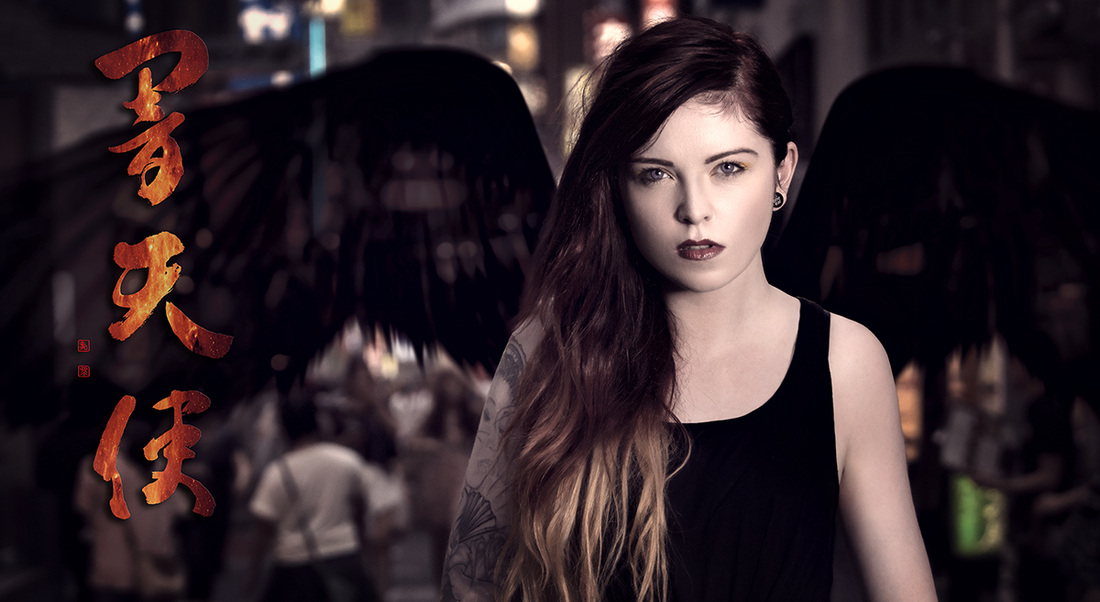


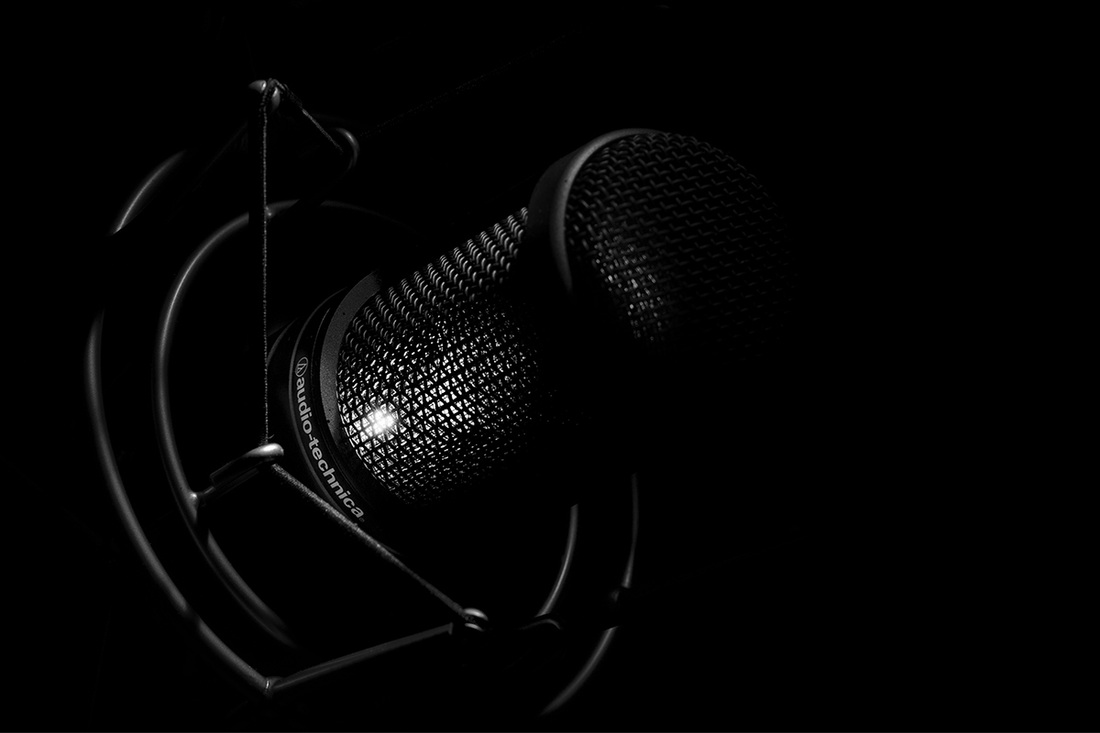

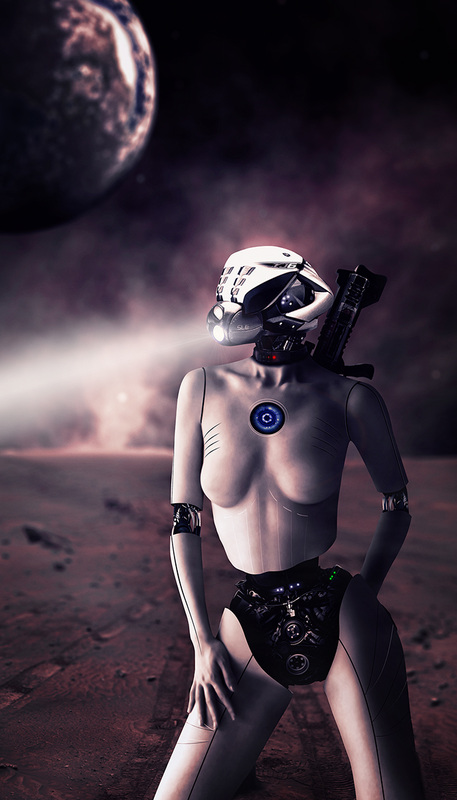



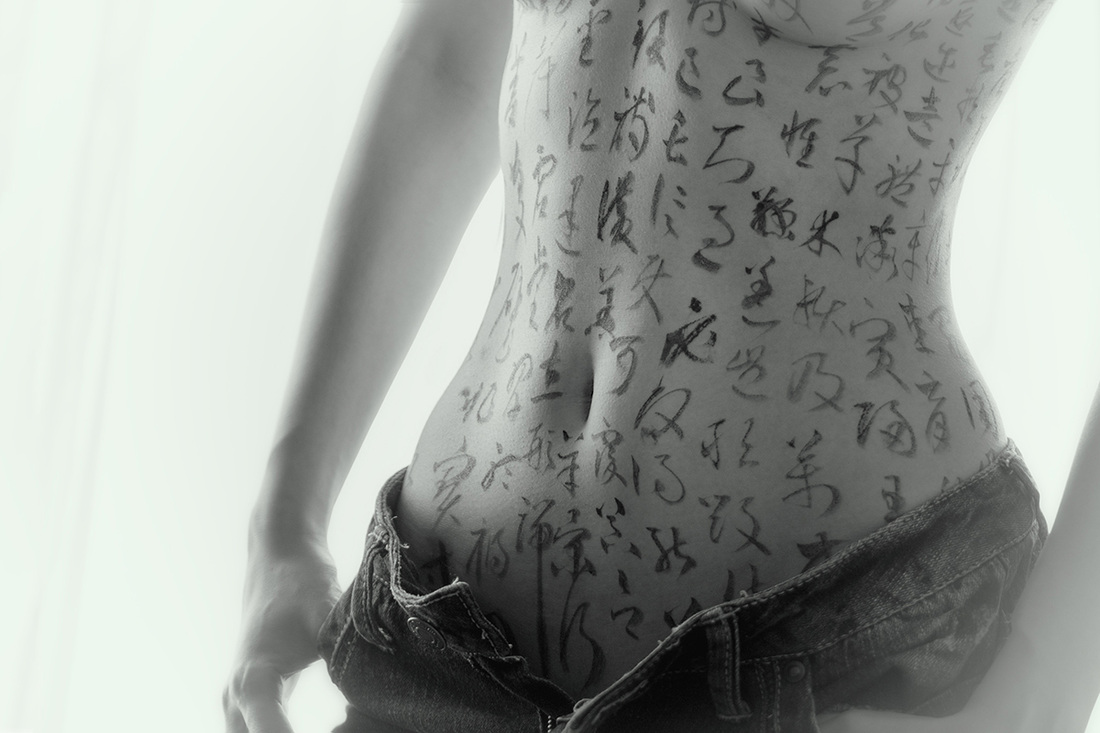
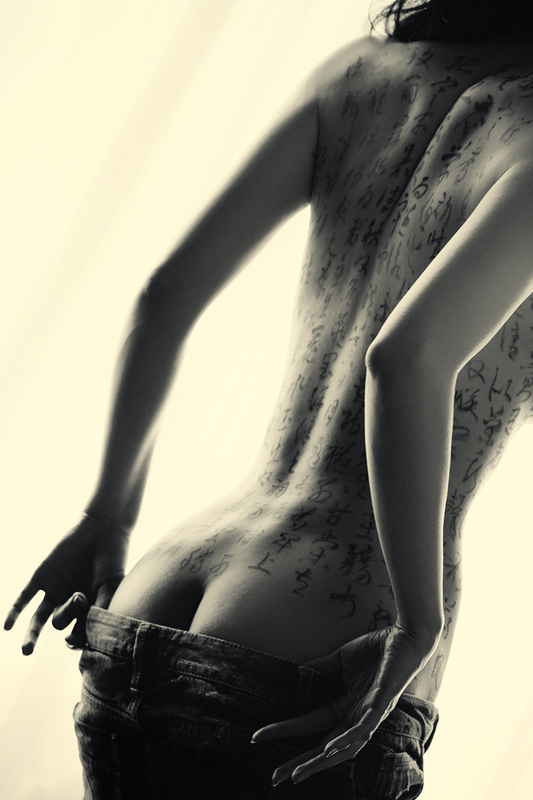



 RSS Feed
RSS Feed
